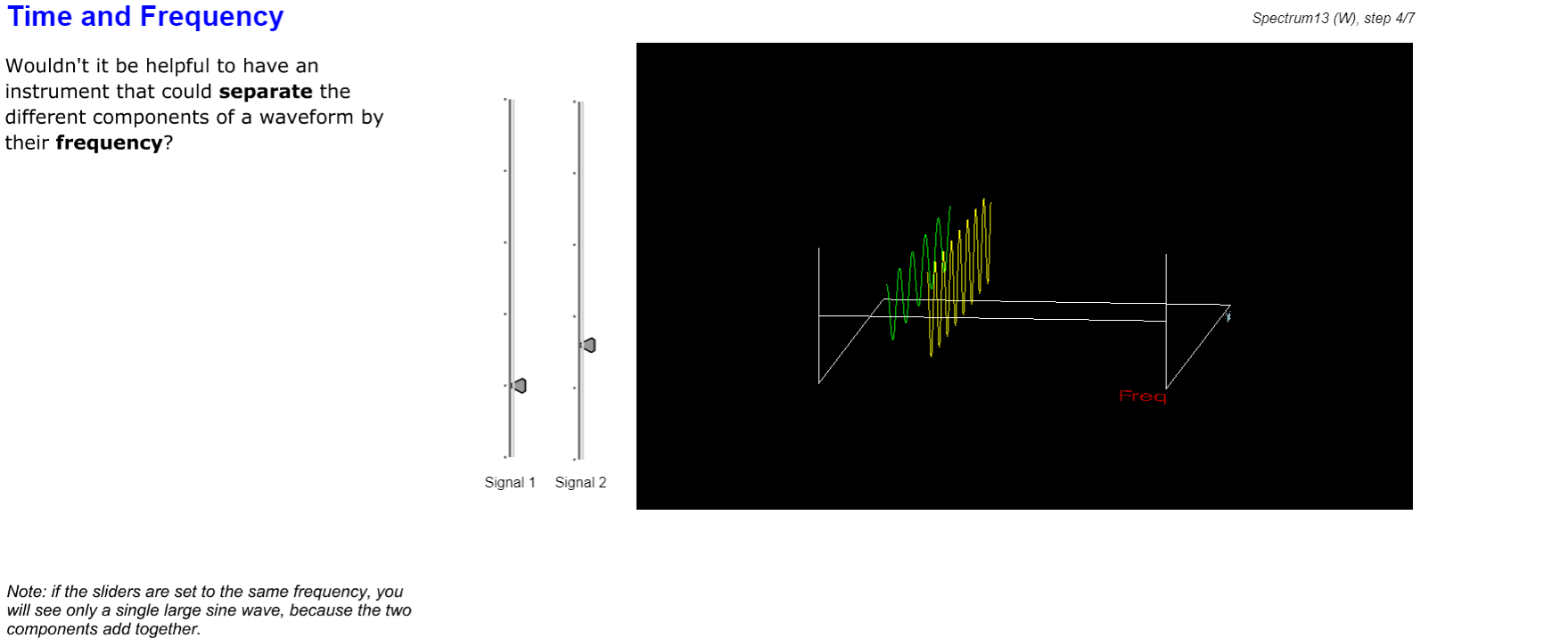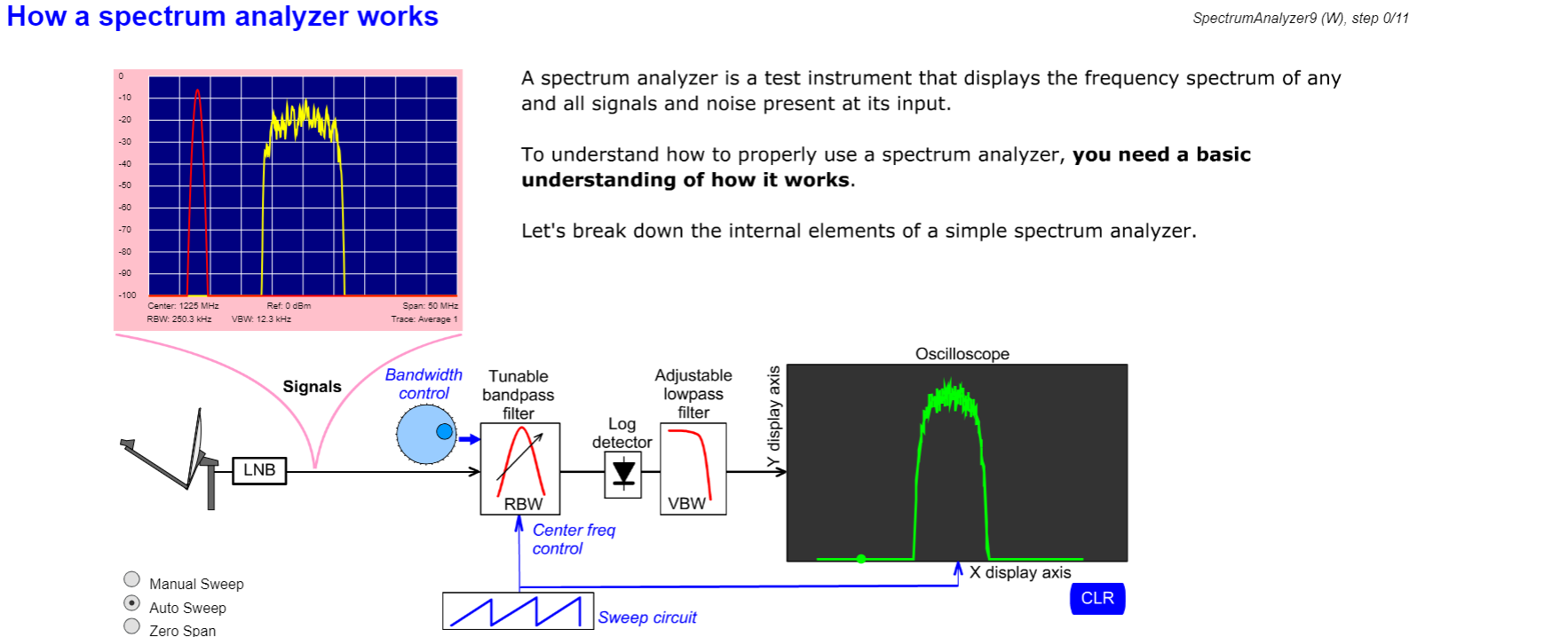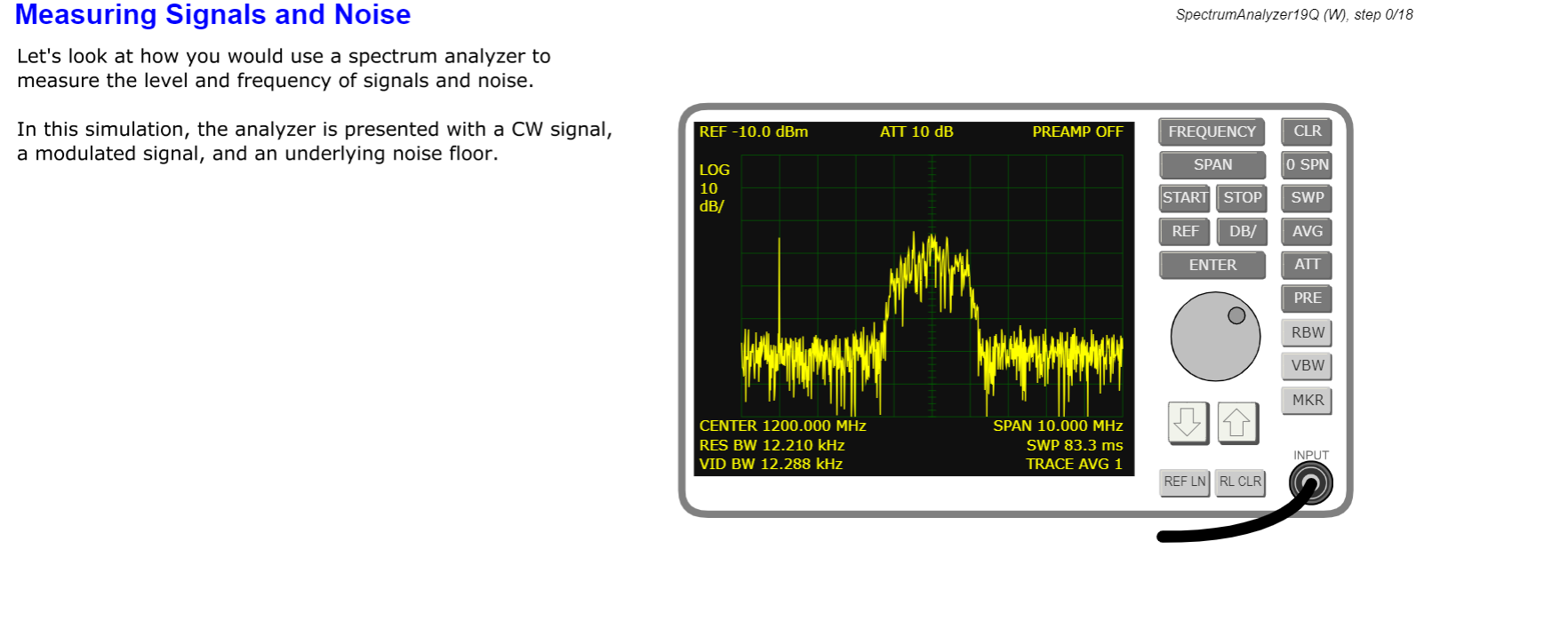Summary
-
Theory of signals and their spectra, how a spectrum analyzer works, and how to make typical measurements in satcom systems. Includes live, interactive spectrum analyzer simulator.
Description
Essential concepts and skills for understand how spectrum analyzers display signals, typical instrument controls, and common satcom measurement techniques. In this course we will review essential theory of signals and their spectrums using interactive 3D time-frequency graphs, learn how a spectrum analyzer works with live animations, and discuss how to make typical measurements in satellite communications systems. You will be using a live, functional, interactive spectrum analyzer simulator for tutorials, skills practice, and skills assessments.
Prerequisites:
GVF 520 recommended.
Audience:
Engineers and technicians who use spectrum analyzers or who wish to learn about spectrum measurement theory.
Delivery:
Animated & interactive HTML5, self-paced, on-line format. Requirements: internet access while studying the course material (high speed preferred ); current browser with JavaScript enabled; permission to access SatProf server and learning system websites; mouse.
Tests:
Each lesson contains a mandatory quiz. The third lesson also includes randomized skill assessments using the fully-function spectrum analyzer simulator. All pages must be viewed and all quizzes and simulator tests must be passed in order to successfully complete the course.Lessons
- Review of signals and spectra. Time and frequency domains. Spectra and waveforms of CW and modulated signals. Relationships between a signal’s bit rate, power, and bandwidth. Properties of noise, noise power in bandwidth, and noise power spectral density. Carrier to noise ratio.
- Spectrum analyzer concepts. How an analog spectrum analyzer works. Block diagram of key elements. Frequency and amplitude settings. Resolution bandwidth (RBW), video bandwidth (VBW), and trace averaging. Zero span. Markers and reference lines.
- Making measurements. Measuring CW and modulated signal power. Measuring bandwidth. Measuring noise spectral density. Measuring carrier to noise ratio. (C+N)/N compared to C/N. Finding a satellite with a motorized antenna. Techniques for identifying satellites. Accurate antenna pointing using beam balance. Making antenna pattern cuts with zero span.


